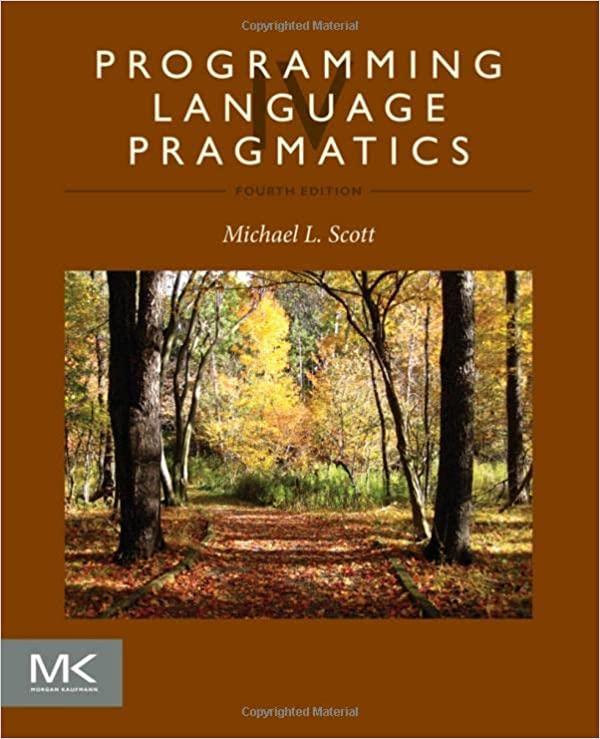Consider the following pseudocode: 1. procedure main() 2. a : integer := 1 3. b : integer
Question:
Consider the following pseudocode:
1. procedure main()
2. a : integer := 1
3. b : integer := 2
4. procedure middle()
5. b : integer := a
6. procedure inner()
7. print a, b
8. a : integer := 3
9. –– body of middle
10. inner()
11. print a, b
12. –– body of main
13. middle()
14. print a, b
Suppose this was code for a language with the declaration-order rules of C (but with nested subroutines)—that is, names must be declared before use, and the scope of a name extends from its declaration through the end of the block. At each print statement, indicate which declarations of a and b are in the referencing environment. What does the program print (or will the compiler identify static semantic errors)? Repeat the exercise for the declaration-order rules of C# (names must be declared before use, but the scope of a name is the entire block in which it is declared) and ofModula-3 (names can be declared in any order, and their scope is the entire block in which they are declared).
Step by Step Answer:






